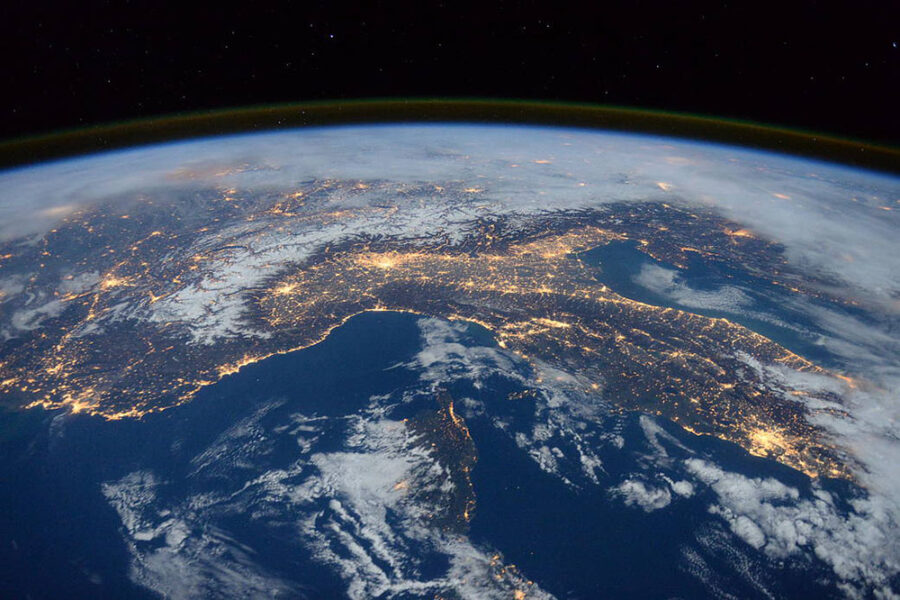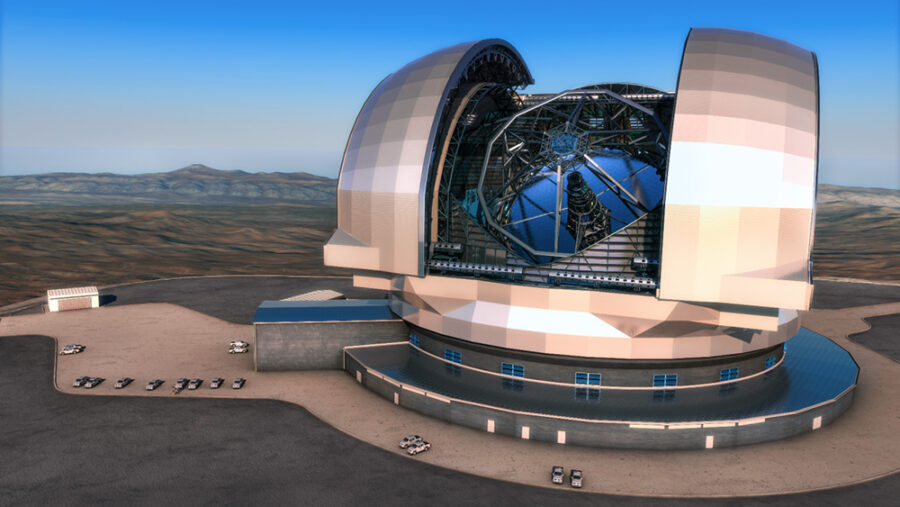The first quantitative assessment of professional telescopes’ carbon footprint finds that they contribute more emissions than all other astronomy research activities combined.

ESA / NASA
An international team of astronomers has determined how much astronomical facilities — namely, the telescopes on the ground and in space that astronomers use to study the sky — contribute to climate change. Reporting in Nature Astronomy, the team estimates that this footprint outweighs all other research-related activities, a finding that has big implications for the future of the field.
The researchers felt spurred to conduct the study by current events: “Humankind is facing a climate emergency,” says team member Annie Hughes (Max Planck Institute for Astronomy, Germany). “The scientific evidence is unequivocal that human activity is responsible for modifying the climate. The scientific evidence is equally clear that we must change our activities in the next decade.”
Calculating Telescopes’ Carbon Footprint
Astronomers, like everybody else, have a carbon footprint. This oft-used term can have subtly different definitions; in this case, Jürgen Knödlseder (University of Toulouse, France) and colleagues define it as the total greenhouse gas emissions of a facility over its life cycle. Emissions consist mostly of carbon dioxide and methane but include a number of other heat-trapping gases as well.
A general lack of data makes it difficult to determine how much astronomers contribute to greenhouse gas emissions. Previous studies have focused on research-related activities such as flying to conferences and using supercomputers. But the biggest source of astronomy’s carbon footprint, the new study finds, is the construction and operation of increasingly larger telescopes.
Because precise data is lacking, often due to issues of confidentiality, the team came to this conclusion using a technique called economic input-output analysis. It basically determines carbon emissions by cost and/or weight. Knödlseder compares the process to fueling a car: Filling a tank all the way full instead of halfway will double its weight. Doubling the fuel will both cost twice as much and produce twice the emissions.
Using this input-output analysis, the team calculated that current astronomy facilities over their life cycles produce the equivalent of 20 million tons of carbon dioxide, with an annual emission of more than 1 million tons of carbon dioxide equivalent.
“To give you some perspective,” Knödlseder notes, “this is the annual carbon footprint of countries like Estonia, Croatia, or Bulgaria.” Another piece of perspective: The U.S. in 2019 contributed emissions equivalent to more than 6.5 billion tons of carbon dioxide.
It’s a Start
Cost/weight data has the benefit of being publicly available, though still sometimes difficult to find, Knödlseder says. That makes any kind of calculation possible at all. But Andrew Ross Wilson (University of Strathclyde, UK), who wrote an accompanying perspective piece for Nature Astronomy, says that the method is not commonly used in carbon accounting, particularly for space activities.
“It was found that using economic input-output methods . . . significantly overestimates the total environmental impacts,” Wilson says. The reasons are many: For one, the space industry, often funded by the state, is not a truly free market. Also, the custom-made materials used in space missions often cost more because of their research and development rather than their manufacturing.
“As such,” Wilson says, “the European Space Agency (and others) have created a new process database to fill these gaps more accurately and do not recommend applying economic input-output databases to space life-cycle assessments.”
Knödlseder’s team acknowledges these caveats, but they argue that providing these first-order estimates is a crucial first step. The next step is for facilities to conduct their own, more detailed analyses — and then take action.
“I think Knödlseder's assessment is a fairly decent first-order approximation due to the lack of data that was available to him and his team,” Wilson agrees. “It is certainly a good first step for more detailed assessments.”
But he cautions, “I'm not convinced any space life-cycle assessment practitioner would particularly use this result to inform their own analyses. ESA certainly wouldn't look twice at this estimation.”
Slow Science
Nevertheless, Knödlseder’s team argues even the rough numbers are basis for action: “The solutions are in our hand, we only need to be able to take them,” says team member Luigi Tibaldo (Institute of Research in Astrophysics and Planetology, France).
The first step is to switch existing facilities from fossil fuels to renewable power sources, an effort already underway in many places. Difficulties remain for telescopes in remote locations, though, since they’re not typically connected to the local power grid. The Atacama Large Millimeter/submillimeter Array in Chile, for example, is powered by diesel-fueled generators. Other facilities may be easier to fold into ongoing systematic changes.
But those actions won’t be enough, the team argues. Astronomers must also slow the pace at which we build new facilities. Benefits extend beyond reducing emissions, as “slow science” would give us more time to fully make use of the data we already have. Certainly, research for entire PhD theses have been conducted using solely archived observations.

ESO / L. Calçada
Jennifer Wiseman, senior project scientist of the Hubble Space Telescope, agrees on the value of archival data. “We’ve made the archive of Hubble data so robust that at least as many scientific papers are published these days based on archival data as from new observations,” she says. “This means good, multiple uses of data that will be available for many years to come.”
But many astronomers take issue with slowing down. Indeed, some members faced resistance from colleagues even before publishing the paper.
“There’s nothing that says astronomy can’t or won’t switch to renewable energy sources along with the rest of the economy,” says John Mather (NASA Goddard Space Flight Center), the project scientist of the James Webb Space Telescope. “The carbon footprints being calculated are not constants of nature, they’re just estimates of a piece of a system governed by feedback loops.”
Mather also raises a counterargument to slowing the pace of science: “Some kinds of astronomy are already becoming difficult or impossible due to light pollution, radio interference, and satellite constellations,” he says. “It can be argued that we should increase our efforts to learn everything we can, as soon as possible, before we can’t.”
Still, the team remains stalwart in their position: “Fighting climate change is a collective challenge, and everyone, every activity sector and every country, has to contribute to meet that challenge,” Knödlseder says. “In fighting climate change, there are no priority solutions; we have to activate all possible lever arms to bring our emissions down. Of course, some measures will be more efficient than others, but we need them all to succeed.”
 1
1